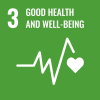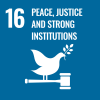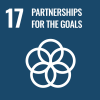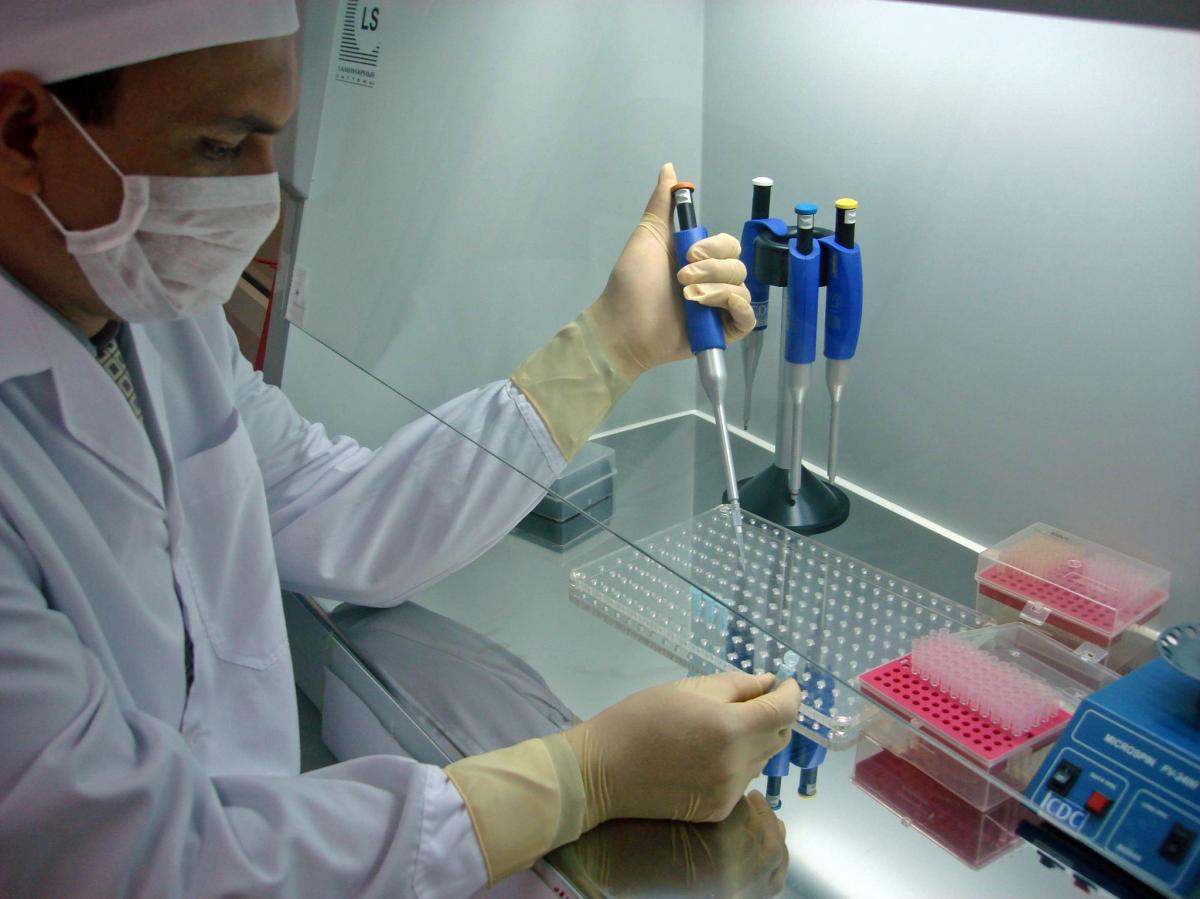
Science and technology are essential to humanity’s collective response to the COVID-19 pandemic. Yet the extent to which policymaking is shaped by scientific evidence and by technological possibilities varies across governments and societies, and can often be limited. At the same time, collaborations across science and technology communities have grown in response to the current crisis, holding promise for enhanced cooperation in the future as well. How can we improve the way in which science and technology are harnessed to resolve global challenges such as the current pandemic? This policy brief presents a set of recommendations towards this end, drawing upon the emerging response to the pandemic as well as ongoing multi-stakeholder conversations in the context of the United Nations Technology Facilitation Mechanism (TFM). Each of these recommendations will be critical to recovery from the pandemic, as also strengthening the contributions of science towards the Sustainable Development Goals (SDGs).
Five lessons for science, policy and society
Strengthen national capacities for science-based decision making across all countries
Scientific assessments like the one presented in Figure 1 are guiding policies to respond to COVID-19 in countries across the world. Across countries, such assessments share many common features, but there is considerable variation in when actions are being initiated following detection of the first cases in each country, and what the responses look like (Hale et. al. 2020). Much of this reflects different country contexts, but it also underscores differences in science–policy advisory systems. Hence, there is a need to re-assess the functioning of these systems, where they exist; and to build them up where they are weak or non-existent. In poorer countries, such as least developed countries (LDCs) and landlocked developing countries (LLDCs), longer term structural weaknesses at the science–policy interface have been documented. The TFM’s work on supporting countries to develop their roadmaps for applying science, technology and innovation (STI) to the SDGs, and the accompanying inter-agency UN support is helping to address these. 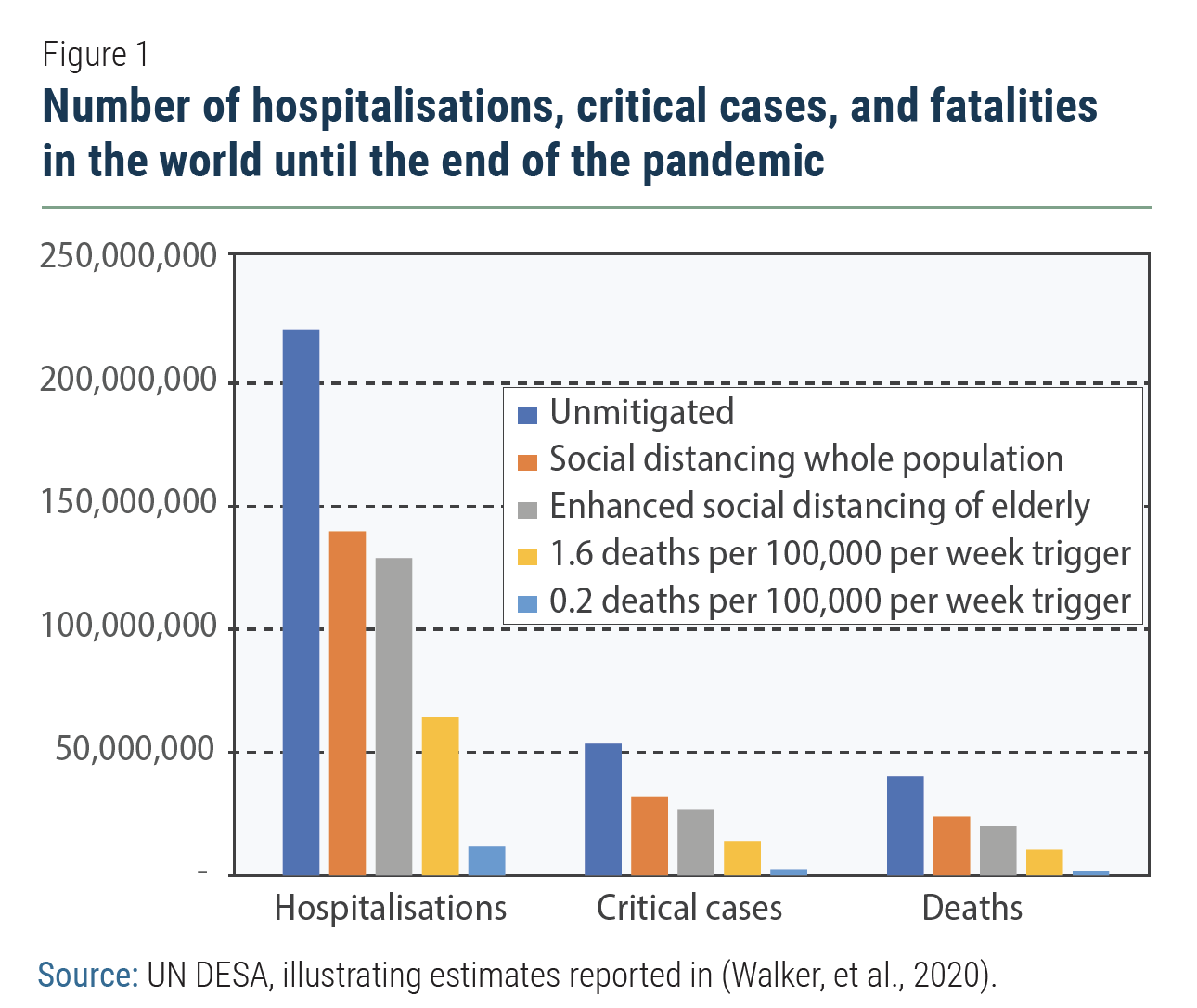 Across other countries, arrangements vary: a recent OECD (2020) survey across 30 countries illustrates that there is a wide range of institutional configurations for science–policy advice on COVID-19, marked by both formal and ad hoc structures. But even where systems exist and are well established—for example through institutionalised positions of science advisors in ministries and to the head of government—there is room for improvement. In particular, COVID-19 responses are marked by needing to mitigate difficult trade-offs. Such decisions call for multi-sectoral and inclusive assessments—by bringing natural scientists together with economists and other social scientists, including those who may be able to present differential impacts across different communities and population groups. Policymakers and chief science advisors must therefore be able to tap into a wide range of science and technology advice from both within and outside governments. When scientific advice is solicited, it is important to make such advice public in an open and transparent way. Otherwise, public trust in both science and governments risks being eroded. The United Kingdom, for example, adjusted its approach to the pandemic on the basis of an epidemiological scenario study that was made publicly available (Ferguson, et al., 2020; Adam, 2020). Yet another aspect is the need for timely data to inform policy. Indeed, evidence-driven early action, guided by rapid and pro-active testing has been fundamental to early successes in several countries including Austria and the Republic of Korea, as also in territories such as the province of Kerala in India. In many others, though, limited testing in the early stages appears to have delayed understanding of the pandemic trajectory in the country and therefore an appropriate policy response. All countries will need significant enhancement of testing and monitoring capacity to generate the real time evidence and disaggregated data that will “flatten the curve” and enable a sustained recovery.
Across other countries, arrangements vary: a recent OECD (2020) survey across 30 countries illustrates that there is a wide range of institutional configurations for science–policy advice on COVID-19, marked by both formal and ad hoc structures. But even where systems exist and are well established—for example through institutionalised positions of science advisors in ministries and to the head of government—there is room for improvement. In particular, COVID-19 responses are marked by needing to mitigate difficult trade-offs. Such decisions call for multi-sectoral and inclusive assessments—by bringing natural scientists together with economists and other social scientists, including those who may be able to present differential impacts across different communities and population groups. Policymakers and chief science advisors must therefore be able to tap into a wide range of science and technology advice from both within and outside governments. When scientific advice is solicited, it is important to make such advice public in an open and transparent way. Otherwise, public trust in both science and governments risks being eroded. The United Kingdom, for example, adjusted its approach to the pandemic on the basis of an epidemiological scenario study that was made publicly available (Ferguson, et al., 2020; Adam, 2020). Yet another aspect is the need for timely data to inform policy. Indeed, evidence-driven early action, guided by rapid and pro-active testing has been fundamental to early successes in several countries including Austria and the Republic of Korea, as also in territories such as the province of Kerala in India. In many others, though, limited testing in the early stages appears to have delayed understanding of the pandemic trajectory in the country and therefore an appropriate policy response. All countries will need significant enhancement of testing and monitoring capacity to generate the real time evidence and disaggregated data that will “flatten the curve” and enable a sustained recovery.
Enhance public trust in science
Public trust in science is essential for science-based policies to succeed: in the case of COVID-19, all individuals must trust the scientific guidance if they are to alter their behavior and lower rates of transmission. This becomes easier if there is a common understanding that scientific insights—based on objective evidence—can really work in practical settings, independent of normative values or ideologies. In general, levels of trust in scientists are quite high albeit with differences across countries and regions. A 2019 survey conducted across 140 countries showed that, globally, 72% of the respondents trusted scientists at “high” or “medium” levels. However, the proportion expressing “high” or “medium” levels of trust in science ranged from about 90% in Northern and Western Europe to 68% in South America and 48% in Central Africa (Rabesandratana, 2020). It is also important to note that there are enduring group differences within countries (Gauchat, 2012). Where public trust is high, clear and direct communications from scientists are likely to be most effective. A phrase like “flatten the curve”, for instance, captures complex modeling into a communicable, accessible, understandable and actionable message—although additional effort may be needed to ensure it is crafted so as to reach all sections of the population, accounting for differences in age, disability status, language and culture. Even where public trust in science is limited such messages can drive action, but may need additional sup.port from credible champions from other areas. A novel pandemic presents specific challenges as well: relatively little may be known to start with, and as new knowledge becomes available, scientific guidance may change. Being able to honestly explain the uncertain.ties and evolving understanding is also essential to maintaining credibility. Yet another challenge—also applicable to other areas of science-based policymaking—is countering the “infodemic”: incorrect and potentially damaging information that is disseminated widely through various media platforms and social networks. It can be difficult to distinguish between true and false: researchers have reported that about 60% of mis.information about COVID-19 actually has some vestige of truth to it but is “spun” to make it misleading (Brennen et al., 2020). Social media platforms can counter these through active flagging and removal, while also promoting accurate, validated information based on trusted sources such as the World Health Organization’s (WHO) myth busters. Prominent public figures have an especially important role, as their posts generate far greater social media engagement. Such efforts will continue to be urgent during recovery in both the immediate and medium term, including in dealing with attitudes against the acceptance of vaccines in many countries. Effective science-based engagement with society can go beyond communicating knowledge and guidance into active collaboration through “citizen science”, where non-scientists also participate in scientific advance and discovery. The general public can actively contribute through several initiatives—for example self-reporting temperatures or flu-like symptoms every day (FluTrack.ing), participating in online challenges in designing antiviral proteins through folding games (FoldIt, Folding@home) and many others (Tulloch, et al., 2020). Such collaboration can, over time, improve public understanding of science, and trust in it.
Share knowledge and data to promote collaborative research
Academic research is traditionally published in journals only accessible on payment, which limits access in various ways. In response to the pandemic, prominent academic journals have dropped subscription requirements: high quality peer-reviewed articles relating to COVID-19 are now available to researchers from across the world, and across disciplines. The pace of discovery has been further accelerated by sharing research and data even before it goes through the formal peer-review process for journal publication. For example, early public online sharing of the genome of the virus by scientists in China allowed researchers in Germany to rapidly build PCR-based testing kits that were then made available around the world by the WHO. It allowed the rapid identification of candidate vaccine prototypes and was essential for researchers in the Unit.ed States to produce a 3D model of the virus to better understand the infection mechanism and support drug development (Shang, et al., 2020). Dedicated sharing and collaboration initiatives have also emerged. The Virus Outbreak Data Network is a pub.lic-private effort that aims to make all possible COVID-19 data available. In addition, grassroots cooperation efforts by scientists are emerging. For example, Crowdfight Covid19 is an online initiative matching volunteering scientists to requests for help on COVID-19 research from around the world: 32,000 such matches had been made by the end of March. These initiatives in turn allow other researchers such as AI experts or those working with big data analytics in technology companies to contribute. Policymakers too can benefit from these advances in “open science” by tapping into the collective, multi-disciplinary expertise available through these networks to “better interrogate their models and…improve their decisions” (Nature, 2020). They can also accelerate the sharing of publicly funded research and data collected by public agencies. There are broader implications for policy and society as well. On the one hand open access promotes collaboration across disciplines and geographies, being especially important for developing countries that may otherwise find it difficult to participate in the latest research. At the same time, the rapid dissemination of results inevitably leads to some that are not valid becoming wide.ly available. While they may be corrected later through the efforts of other researchers, their initial dissemination can fuel misinterpretation and lower credibility. Societal consensus also needs to be developed over privacy and data sharing.
Ensure universal access to solutions
While rapid and ready access to research results and data is fueling collaborations in a decentralized way, more co.ordinated multi-stakeholder and multilateral efforts are also needed to accelerate progress towards practical solutions and, when these become available, ensure universal access to them. A prominent example of this is the Coalition for Epidemic Preparedness Innovations (CEPI), launched in 2017 as a partnership between public, private, philanthropic and civil society organizations to accelerate the development of epidemic vaccines. Its ongoing work has cut the expected development time for a COVID-19 vaccine to 12–18 months, and its grants are providing quick fund.ing for some promising early candidates. It is estimated that an investment of USD 2 billion will be needed, with resources being made available from a variety of sources (Yamey, et al., 2020). The need for a vaccine is global, but past experience shows that fair and equitable access is not a given (Fidler, 2010). One of the most important functions of the science–policy–society interface at the global level is ensuring universal access to such global public goods. Similar considerations apply also to medicines that may become available to treat the disease. Apart from medicines and vaccines, technology-driven solutions are becoming available in different countries as they come to terms with the pandemic—flu symptom tracking through digital devices, movement tracing, low cost ventilator design, 3-D printed equipment, tele.medicine and remote learning innovations to name a few. The TFM’s networking and sharing spaces—the annual global multi-stakeholder STI Forum and the online platform—facilitate wider access to these innovations for adoption across countries. In response to a call for examples of technology solutions to address the pandemic and its impacts, more than 30 submissions were received within a few days and the number is growing. Notwithstanding these developments, deeper structural factors such as Internet availability can inhibit ac.cess. Only slightly more than half the world population (54%) had Internet access in 2019, the figure falling to slightly less than 20% in LDCs. Such access is a precondition to learning about and benefiting from solutions that are made available through web-based channels.
Act with greater urgency on global scientific assessments
International collaborations across scientists and ex.perts are a powerful way of bringing evidence and scientific consensus to the attention of policymakers to inform actions. For example, the report of the Global Preparedness Monitoring Board (2019), an independent expert body co-convened by the WHO and the World Bank, presented a set of actions at all levels to prepare for a global health emergency, such as “a rapidly spreading pandemic due to a lethal respiratory pathogen”. While seemingly prescient, this was just the most recent of calls to action, arising from earlier assessments that had followed avian influenza, SARS and Ebola epidemics. Implementing the recommendations of those assessments would have built preparedness within and across countries, and hastened an effective response to the current pandemic, potentially saving tens of thou.sands of lives, hundreds of millions of livelihoods and billions of dollars in overall economic damage. Such preparedness would have been guided by science but also drawn from practical experiences in dis.aster-risk reduction and mitigation. Other independent scientific assessments are also predicting increasingly urgent global challenges, for example with regard to sustainable development, making early preemptive and coordinated action essential.
The way forward—a call for stronger international cooperation
This pandemic is a crisis and a human tragedy—but it is also an opportunity to recognize and address the deeper shortcomings of our current science–policy advisory systems, and their interface with society at all levels. Much of the action will need to come from countries themselves, but international cooperation, supported by the United Nations system, can facilitate progress in all these areas. Many such initiatives are in place, but need to be scaled up. For example, the TFM works with other partners such as the Inter-Academy Partnership, the International Science Council and many others to facilitate the sharing of scientific knowledge and technology solutions. It also helps strengthen national capacities for science-based policymaking for the SDGs, but is currently only able to do this in a small number of countries. Entities such as UNESCO are helping the open science movement to progress towards establishing norms and standards that will facilitate greater, and more timely, access to scientific research across the world. Independent scientific assessments that inform the work of many United Nations bodies are indicating areas needing ur.gent action, and international cooperation can help with national capacities to implement them. At the same time, actively engaging with different stakeholders in countries around the dissemination of the findings of such assessments can help in building public trust in science.
 Welcome to the United Nations
Welcome to the United Nations
